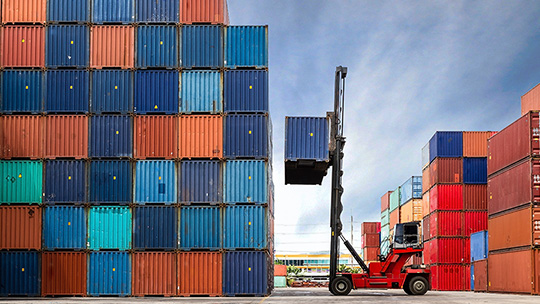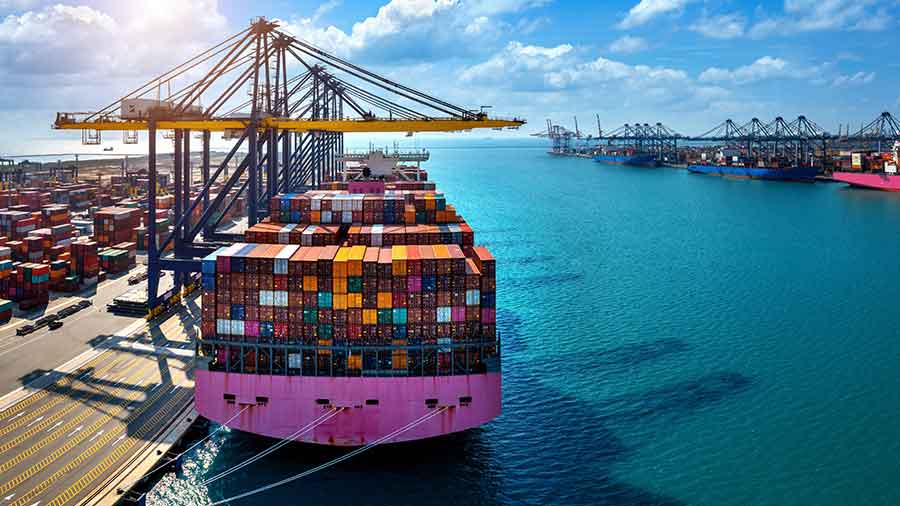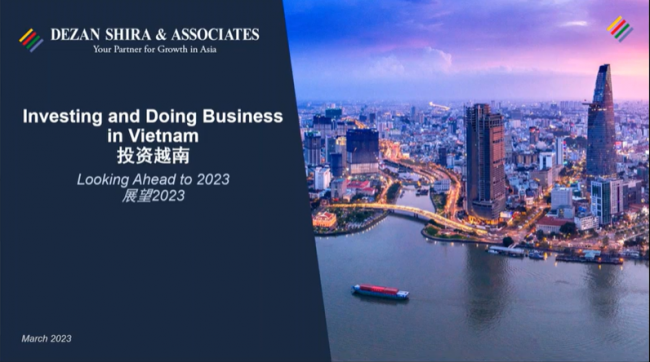Vietnam's labor market has undergone significant transformations over the past few decades, driven by economic reforms known as "Đổi Mới" and a substantial influx of foreign investment. These changes have resulted in a dynamic and diverse labor market that is integral to the country's economic growth.
Moreover, Vietnam's participation in various free trade agreements has further bolstered its economic landscape, enhanced its export capabilities and fostering a more competitive market environment.
This article aims to provide a comprehensive guide on Vietnam's labor market, with a particular focus on comparing the workforce demographics, employment rates, wage levels, key industries, and government policies across the northern, central, and southern regions of the country.
North Vietnam
Economic overview
Northern Vietnam is a powerhouse of economic activity primarily driven by heavy manufacturing, oil and gas, and high-end manufacturing processes such as auto manufacturing.
This region's strategic location and its proximity to China make it a significant hub for industrial activities, particularly in Hanoi and Bac Ninh. These areas attract substantial foreign investment, contributing to their robust economic landscape.
Characteristics
Northern Vietnam boasts a young and abundant labor force, particularly in major urban centers like Hanoi and Hai Phong. The labor force participation rate is high, with a significant concentration in industrial clusters. The region's workforce is known for its diligence and adaptability, making it a prime location for various manufacturing and industrial operations.
However, companies setting up operations in this region must consider the costs associated with training employees to meet specific skill requirements. The availability of vocational training and educational institutions helps bridge this gap, but further investment in employee training is often necessary to meet industry standards.
Key industries and employment opportunities
The dominant industries in Northern Vietnam include electronics, textiles, garments, chemicals, and food processing. These sectors provide ample employment opportunities, attracting both local and migrant workers.
The region's industrial zones, particularly in Hanoi, Bac Ninh, and Hai Phong, are bustling with activity, contributing significantly to the local and national economy.
Educational and skill levels
While Northern Vietnam has a solid foundation of vocational training and educational institutions, companies often find it necessary to invest in additional training for their workforce. This investment is crucial to ensure employees meet the specific skill sets required by industries, particularly in high-tech and specialized manufacturing sectors.
Government policies and initiatives
The government has implemented various tax incentives and regional development policies to attract foreign direct investment (FDI) to Northern Vietnam. These include corporate income tax (CIT) reductions, import and export tax exemptions, land use tax reductions, and land lease fee exemptions.
Additionally, local governments offer incentives for labor recruitment and training, aiming to enhance the overall skill level and employability of the workforce.
Optimizing HR strategy in Northern Vietnam
Investors considering Northern Vietnam, particularly Hanoi, should conduct thorough HR due diligence to understand the local labor pool's capacity to meet their needs. In regions like Hanoi and Bac Ninh, where labor costs are relatively higher, companies should factor in the cost of additional training for employees. Situating operations near vocational institutions can help ensure that the training aligns with the company's requirements.
For example, Hanoi offers a large and diverse workforce, but companies might need to spend more on training compared to neighboring provinces. Bac Ninh, on the other hand, while having slightly higher labor costs, provides a specialized talent pool, particularly in manufacturing and supporting industries. This specialization often results in higher confidence in the local workforce's quality and reduces the need for extensive training.
Central Vietnam
Economic overview
Central Vietnam, particularly the Da Nang metro area, is a thriving economic region with key activities centered around tourism, real estate, education, entertainment, and information technology (IT). This area has become a focal point for investment due to its strategic location and vibrant economic landscape.
The city's development has been driven by significant investments in infrastructure and pro-business policies, making it an attractive destination for both domestic and international businesses.
Characteristics
The workforce in Central Vietnam is young, dynamic, and well-educated. In Da Nang, the labor force comprises 56 percent of the population, totaling 2.1 million workers, which is 3.8 percent of the national labor force. The region benefits from world-class educational institutions, including universities and vocational schools, which supply a steady stream of qualified labor.
Employment rates in Central Vietnam are moderate, with job availability concentrated in high-tech and service industries. The region’s economic activities provide diverse employment opportunities, attracting a wide range of talent. However, retaining high-tech workers and senior employees remains a challenge due to the competitive nature of these sectors.
Key industries and employment opportunities
Central Vietnam is known for its dominant industries, including tourism, IT, and services. The tourism sector is a significant contributor to the region's economy, drawing millions of visitors each year. This influx of tourists’ fuels job creation in hospitality, entertainment, and related services.
The IT sector is another critical industry, with Da Nang emerging as a high-tech hub. The presence of the Da Nang High-Tech Park has spurred growth in technology-related industries, creating numerous employment opportunities in software development, engineering, and other high-tech fields. Additionally, the real estate and education sectors are expanding, further diversifying the region's economic base and job market.
Educational and skill levels
Central Vietnam boasts a strong educational infrastructure, with numerous universities and vocational schools providing a skilled workforce. Institutions in Da Nang are particularly well-regarded, offering programs that cater to the needs of the region's key industries. This educational foundation ensures that businesses can source qualified employees locally, reducing the need for extensive training and development.
Government policies and initiatives
The government of Central Vietnam, and particularly Da Nang, has implemented pro-business policies and incentives to attract investment. These policies include tax breaks, land-use incentives, and support for infrastructure development, particularly in high-tech parks like the Da Nang High-Tech Park. These incentives aim to foster a conducive environment for business growth, particularly in high-tech and service industries.
The Da Nang High-Tech Park, for instance, provides a range of benefits to businesses, including tax exemptions, land rental reductions, and support for research and development activities. Such initiatives have made Da Nang a competitive destination for investment, particularly in high-tech and knowledge-based industries.
South Vietnam
Economic overview
South Vietnam, particularly the Ho Chi Minh City metro area, is recognized as the commercial hub of the country with a highly diversified economy. This region has experienced substantial economic growth, driven by significant investments in various sectors such as technology, finance, and professional services. The dynamic business environment and strategic location make it an attractive destination for both domestic and international investors.
Characteristics
The labor market in South Vietnam is characterized by a high concentration of migrant labor, especially in Ho Chi Minh City and its surrounding areas like Binh Duong and Dong Nai. This influx of workers contributes to a diverse and competitive labor pool. The region has a high demand for labor, particularly in professional services and IT, reflecting its economic diversification and growth.
Despite the abundant labor supply, companies often face challenges in recruiting and retaining high-skilled workers due to the competitive job market. The higher cost of living in Ho Chi Minh City also contributes to elevated wage expectations, making labor costs some of the highest in the country.
Key industries and employment opportunities
South Vietnam is a hub for several dominant industries, including technology, finance, and professional services. The region's emphasis on high-tech and service industries has created significant employment opportunities, attracting both local and international talent.
The technology sector is particularly robust, with numerous companies setting up operations in the area to leverage the skilled labor pool and supportive business environment. The finance sector also thrives, driven by Ho Chi Minh City's role as the financial center of Vietnam. Professional services, including consulting, legal, and business services, are growing rapidly, further diversifying the employment landscape.
Educational and skill levels
The educational background in South Vietnam is diverse, with many institutions offering specialized training to meet the needs of various industries. Ho Chi Minh City is home to numerous universities and vocational schools that provide a steady stream of qualified graduates. These institutions play a crucial role in maintaining the region's competitive edge by ensuring a continuous supply of skilled labor.
However, companies often need to invest in additional training to align employees' skills with industry-specific requirements. This investment in training helps bridge the gap between academic knowledge and practical application, ensuring that the workforce can meet the demands of a rapidly evolving economic landscape.
Government policies and initiatives
The government has implemented competitive policies to attract foreign investment and support industry growth in South Vietnam. These policies include tax incentives, financial support, and infrastructure development initiatives aimed at creating a favorable business environment.
The Ho Chi Minh City metro area, in particular, benefits from a range of incentives designed to encourage investment in high-tech industries and professional services. The government’s proactive approach in fostering a business-friendly environment has made the region a magnet for foreign direct investment (FDI), driving economic development and job creation.
Optimizing investments in South Vietnam
Investors in South Vietnam, particularly in Ho Chi Minh City, should conduct thorough HR due diligence to understand the local labor market's dynamics and craft effective recruitment and training strategies. Given the competitive nature of the job market, companies must offer attractive compensation packages and invest in employee development to retain talent.
Hiring managers should leverage vocational training institutions and labor exchange services to source skilled labor efficiently. Additionally, focusing on employee retention through competitive wages and benefits can help reduce turnover and minimize the costs associated with rehiring and training new employees.
Comparative analysis
Vietnam's economic landscape is marked by distinct regional contributions, each playing a crucial role in the nation's overall growth. In the North, heavy manufacturing, and high-end manufacturing processes, such as auto manufacturing and electronics, dominate. This region's proximity to China and its industrial clusters in cities like Hanoi and Hai Phong make it a hub for large-scale industrial activities.
Central Vietnam, particularly around the Da Nang metro area, is renowned for its tourism industry and emerging high-tech sectors. The region's scenic beauty and cultural heritage attract millions of tourists annually, bolstering the local economy. Additionally, the presence of high-tech parks and a focus on IT and education sectors have paved the way for significant economic diversification.
In the South, especially in Ho Chi Minh City, the economy is driven by technology, finance, and professional services. Known as Vietnam's commercial capital, this region attracts substantial foreign direct investment (FDI) due to its dynamic business environment and strategic location. The financial sector, along with technology and professional services, provides a wide range of employment opportunities, making it a critical contributor to Vietnam's GDP.
|
Aspect |
North Vietnam |
Central Vietnam |
South Vietnam |
|
Economic overview |
Heavy manufacturing, high-end manufacturing |
Tourism, high-tech industries |
Technology, finance, professional services |
|
Key cities |
Hanoi, Hai Phong |
Da Nang |
Ho Chi Minh City |
|
Workforce demographics |
Young, abundant labor force |
Dynamic, well-educated labor force |
High concentration of migrant labor |
|
Employment Rates and Job Availability |
High labor force participation in industrial clusters |
Moderate employment rates with focus on high-tech, services |
High demand for labor in professional services, IT |
|
Dominant industries |
Electronics, textiles, garments, chemicals, food processing |
Tourism, IT, services |
Technology, finance, professional services |
|
Employment opportunities |
Industrial and manufacturing jobs |
Service and high-tech jobs |
Technology, finance, professional services jobs |
|
Wage levels |
Competitive but lower than South |
Moderate |
Highest due to higher living costs |
|
Living standards |
Lower cost of living |
Moderate cost of living |
Higher cost of living |
|
Educational infrastructure |
Strong vocational training, industrial skills |
Strong presence of universities, vocational schools |
Diverse educational institutions offering specialized training |
|
Skill levels |
Focused on manufacturing and industrial skills |
Emphasis on services and high-tech skills |
High skill levels in technology, finance, professional services |
|
Policies |
Tax incentives, regional development policies |
Pro-business policies, incentives in high-tech parks |
Competitive policies to attract foreign investment |
|
Initiatives |
Attracting FDI, supporting industrial growth |
Supporting tourism and high-tech industry growth |
Supporting technology, finance, and professional services growth |
Challenges and opportunities
In the North, the primary issues are labor shortages and high turnover rates in manufacturing sectors. The rapid industrial growth has outpaced the availability of skilled workers, leading to gaps in the workforce. Companies often struggle to retain employees, particularly during peak seasons, which disrupts production schedules and increases recruitment costs.
Central Vietnam, despite its growing tourism and high-tech sectors, faces challenges related to skill development. The demand for a highly skilled workforce in these industries often exceeds the supply, requiring significant investment in training and education. Additionally, while the region has a robust educational infrastructure, aligning vocational training programs with industry needs remains a challenge.
The South, especially in Ho Chi Minh City, contends with high living costs that drive up wage expectations. This region's diversified economy creates a competitive labor market, making it difficult for businesses to attract and retain top talent without offering substantial compensation packages. The high turnover rates in professional services and IT sectors further compound this issue, necessitating continuous recruitment efforts.
Despite these challenges, Vietnam's labor market presents numerous opportunities for growth and development. High-tech industries, particularly in Central and Southern Vietnam, have significant potential for expansion. Regions like Da Nang are becoming high-tech hubs, attracting foreign investment, and fostering innovation. This growth is supported by the presence of high-tech parks and a focus on developing IT and related sectors.
Increased foreign investment is another critical opportunity for Vietnam's labor market. The government's pro-business policies and tax incentives have made the country an attractive destination for multinational corporations. This influx of investment drives economic growth, creates jobs, and enhances the overall skill level of the workforce through exposure to international business practices and technologies.





















